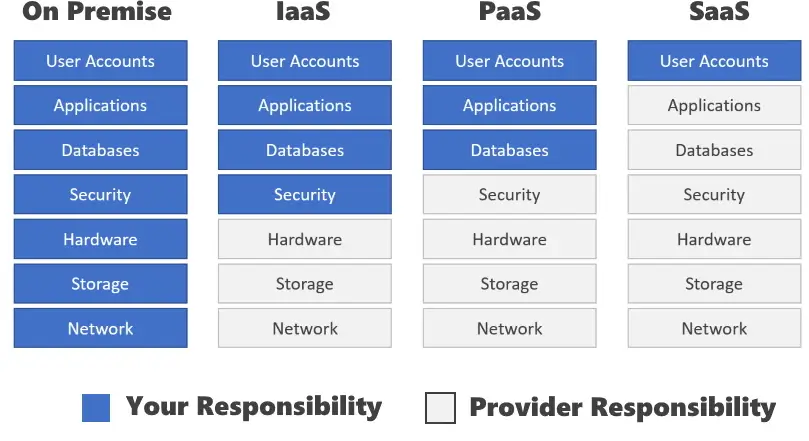IaaS PaaS SaaS For Small Businesses
The cloud has helped transform, secure and accelerate commerce. If you're a small business owner the cloud brings a wealth of benefits notably in the form of Iaas, Paas and Saas offerings. Iaas, Paas and Saas stand for infrastructure-as-a-service, platform-as-a-service and software-as-a-service respectively.
Here’s some guidance regarding what they mean and why they matter.
When you think of the cloud a few names come to mind easily: Microsoft’s Azure, Amazon’s AWS and Google’s cloud. Prior to their arrival companies who had servers either kept them physically on-premise in a server closet, or leased space from data center. They purchased software and installed it on those same physical servers. Businesses operating in that manner are acting as their own infrastructure provider. Redundant power, network switches and servers, hardware failures, backups, storage and security are all the responsibility of the business.
When the cloud arrived the paradigm shifted to and three main offerings emerged. what’s known as Iaas – Infrastructure as a service. Under this model businesses relieved themselves of the burden of purchasing and maintaining hardware. Instead the infrastructure was provided a service to businesses in much the same way a utility company provides infrastructure.
IaaS stands for infrastructure as a service. Example: Think of the electric company; they provide the power lines, transformers and switches to get power to your home. They take care of the infrastructure and you pay a monthly bill based on usage. Iaas works in a very similar way.
PaaS stands for platform as a service. Paas is a set of software and hardware resources that provide a business with the underlying software and hardware infrastructure they need to host their company software. This using a Paas model companies can focus more on the application they are building and less on software and hardware required to make it run, because the platform provider takes care of that. Example: The electrical wiring, outlets, wall switches and circuit breaker panel is similar to Paas. Everything is in place for you to use the electrical service to power a computer, television, appliance, treadmill etc.
SaaS stands for software as a service. If you use Office365 online or Gmail – you’re already familiar software as a service. Under a Saas model a company charges a fee to others for using their software product. The software is often maintained and improved by the provider. Example: Saas is like a streaming video service ( Netflix, Amazon Prime, YouTube etc). You're the consumer of finished products and services.
All three models work together to provide benefits such as:
Disaster recovery is much easier if your the software systems and data you rely on are accessible from anywhere.
Businesses can scale technology up or down based on demand. This helps meet market needs in a fraction of the time and with much greater financial flexibility.
Economies of scale are achieved that otherwise wouldn't be possible. Businesses gain the benefit from the cloud provider's investment in improving their technology offering. For instance its reported that Microsoft invest nearly one Billion dollars each year in cyber security. You as the consumer reap the benefit of their efforts.
The cloud isn't a sliver bulllet, it solves many many things, but responsibilities still exist. For example:
Iaas – as a consumer of infrastructure-as-a-service you're renting computer resources (CPU, memory, storage, network capabilities). Your company may, in many cases be responsible for maintaining the server’s security and patches.
Paas – as a consumer of a platform-as-a-service you're responsible responsible for ensuring your software is deployed and operating as expected. You don’t need to focus on servers, storage, operating systems or networks – all of that is taken care of by the platform provider.
Saas – as a consumer of a software-as-a-service you're responsible for the user accounts and proper user of the system. Email is a great example – a company administrator is responsible for managing email accounts, and each user is responsible for email they send and receive. That’s it. The software vendor who is providing the application is responsible for its availability, reliability and quality.

Cloud computing brings tremendous advantages to businesses of all sizes. It provides many built-in disaster recovery capabilities and removes the burden of worrying about hardware degradation and failure. The end result is increased productivity and through careful technology management overall reduced cost of ownership.
If you have a question about cloud computing or custom software development, contact us for a free consultation.